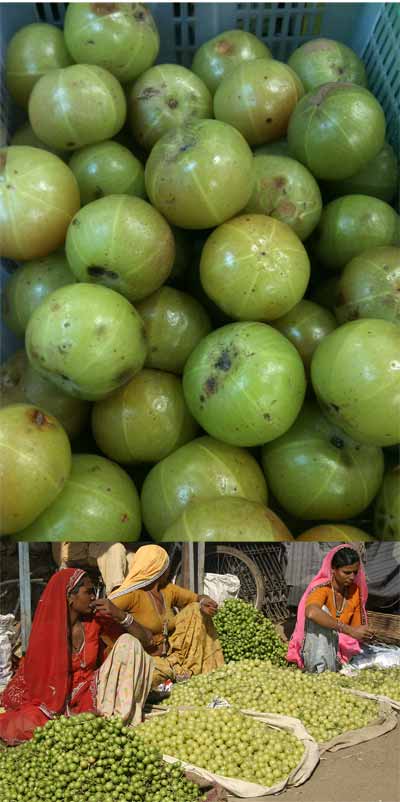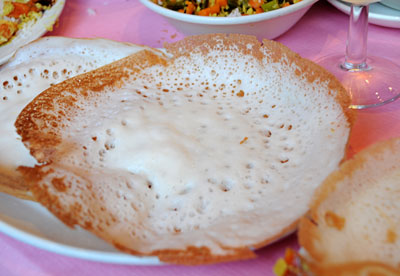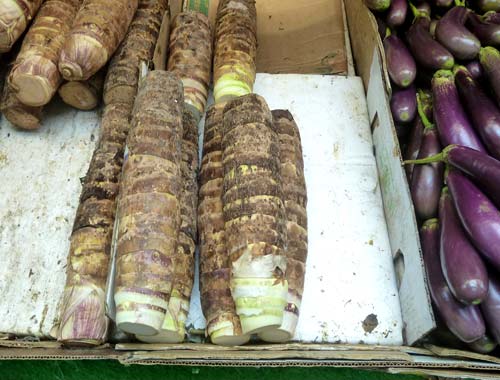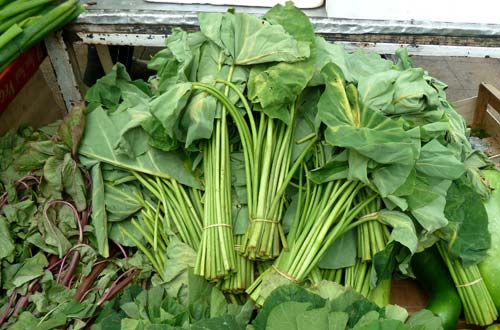Dill. An herbaceous plant which grows practically all over India. It is about 1 meter (3 ft) in height, with wispy leaves bearing clusters of small yellow flowers and oval, pod-like fruits. The fruits are left to ripen on the plant until they have dried. The fragrant seeds are then extracted, threshed and dried. It has an aroma slightly reminiscent of caraway, warm, aromatic and tingly.

Indian gooseberry. A sour fruit used in chutneys and preserves, but more frequently used for medicinal purposes than culinary.

A hopper. It is a spongy, lacy, bread-like pancake, a breakfast dish, made from rice flour, fermented coconut milk and batter cooked in small wok-like pans with covers.

Taro. Colocasia. A plant grown both for its leaves and tuberous, potato-like roots, or corms. The roots, the flesh of which may vary from white to pink, have a delicate flavour and can be peeled and boiled, roasted, mashed, fried or included in a stew.e flesh of which may vary from white to pink, have a delicate flavour and can be peeled and boiled, roasted, mashed, fried or included in a stew.

Taro leaves. Colocasia leaves. Taro is a name used to cover many root crops grown in tropical regions, most commonly Colocassia esculenta. The leaves come from plants cultivated in warm climates both for their leaves and tuberous, potato-like roots, or corms. The roots, the flesh of which may vary from white to pink, have a delicate flavour and can be peeled and boiled, roasted, mashed, fried or included in a stew and look like a pointed swede, often with a ridged surface and protruding roots, with hairy beige or brown skin. They may weigh as much as 2 kg (4¼ lb). The leaves are large and floppy, fan-like and used as a vegetable or in soups. Some varieties of taro grow extra corms which bud on the main corms, or dasheens. These "buds" are known as eddos, particularly in the West Indies. Taro is a good source of high-grade protein. Whole taros with the skin intact are preferable to those that come peeled.